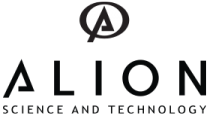China OEMs' Digital Transformation Strategy Research Report, 2020-2021: Tesla is Still the Best Reference - ResearchAndMarkets.com
The "China OEMs' Digital Transformation Strategy Research Report, 2020-2021" report has been added to ResearchAndMarkets.com's offering.
Research on digital transformation of automakers: Tesla is still the best reference
This report analyzes 21 OEMs' strategies and specific measures for transformation. Conventional automakers like Toyota and Changan Automobile have made successes in digital transformation as well, in addition to emerging carmakers.
Toyota Digital Transformation focuses on five aspects: first, adjusting organizational structure, with high priority on restructuring of TRI-AD, Toyota's advanced software company and segmenting its business into "R&D of Automated Driving Technologies", "Incubation of Innovative Projects" and "Investment in Emerging Areas"; second, launching the Mobility Services Platform (MSPF) for an upgrade to the next-generation mobility services; third, building a cloud service platform for better business and operation models; fourth, creating Toyota New Global Architecture (TNGA) to reform R&D and production links; fifth, developing digital products, with deployments in autonomous driving, HD map, chip, HMI, etc.
Changan Automobile takes software as its corporate strategy, setting up a software center to enhance its digital transformation. For R&D and production, the automaker builds a R&D cloud platform for advancing construction of smart cities; for marketing, it creates an integrated marketing cloud platform and self-establishes an ecommerce platform; for product digitization, it makes deployments in areas from cloud platform and intelligence to telematics by way of independent construction and cooperation.
Despite great efforts on digital transformation, quite a few automakers still face some challenges, such as:
- Underpowered transformation, disputed transformation model, and some departments' reluctance to transform;
- Poor ability to attract customers online in digital marketing, and lower-than-expected return on offline high investment;
- Under-investment in digital transformation, which blames for conventional businesses;
- Lack of software teams and user operation experience.
At present, automakers mainly deploy digital transformation in five aspects:
- First, they establish software companies or R&D divisions as well as build software teams through self-construction or cooperation.
- Second, automakers set up digital centers internally to coordinate the digital transformation of the entire groups and promote the implementation of overall digital strategy.
- Third, automakers can reduce costs and improve competitiveness by allying with other automakers.
- Fourth, automakers prompt digital transformation through cooperation with technology companies (such as Baidu, Alibaba, Tencent, Huawei, etc.).
- Fifth, automakers create an online & offline user-centric digital marketing model.
Key Topics Covered:
1 Status Quo of Automakers in Digital Transformation
1.1 Digital Transformation
1.2 Development of Digital Technology and Evolution of Business Model
1.3 Motivations for Digital Transformation
1.4 Opportunities in Digital Transformation
1.5 Competences in Digital Transformation
1.6 Relationship between Automakers' Digital Transformation and "CASE" in Automotive
1.7 Digital Transformation Models
1.7.1 Production Digitalization
1.7.2 Product Digitization
1.7.3 Marketing Digitization
1.7.4 Service Digitization
1.7.5 Management Digitization
2 Digital Transformation of Foreign Automakers
2.1 Toyota
2.2 Volkswagen
2.3 BMW
2.4 Mercedes-Benz
2.5 Honda
2.6 GM
2.7 Ford
2.8 PSA
2.9 Hyundai
2.10 Nissan
3 Digital Transformation of Chinese Automakers
3.1 SAIC
3.2 FAW
3.3 BAIC
3.4 Changan Automobile
3.5 Geely
3.6 BYD
3.7 GAC
3.8 Great Wall Motor
4 Digital Transformation of Emerging Automakers
4.1 Tesla
4.2 NIO
4.2.1 Competitive Edges
4.2.2 R&D Center
4.2.3 Financing and Equity Structure
4.2.4 Marketing-Full Self-operation Model
4.2.5 Experiential Marketing
4.2.6 Investment Status
4.3 Leading Ideal
4.3.1 Competitive Edges
4.3.2 Core Management Team
4.3.3 Financing and Equity Structure
4.3.4 Intelligent Manufacturing Base
4.3.5 Fully Direct Sales Model
5 Trends of Digital Transformation of Automakers
5.1 Digital Transformation Layout of Conventional Automakers
5.1.1 Build Software Teams
5.1.2 Build Digital Centers
5.1.3 Automaker Alliances Cooperate to Get through Difficulties Together
5.1.4 Join Hands with Technology Companies to Promote Digital Transformation
5.1.5 Modularize Production Architecture
5.1.6 User-centric O2O Marketing Model
5.2 Obstacles Encountered by Conventional Automakers in Digital Transformation
5.2.1 Problems in Digital Transformation of Automakers
5.2.2 Automakers Have a Setback in Cooperation
5.2.3 Problems in Marketing Digitalization
5.2.4 Other Problems in Transformation of Conventional Automakers
5.3 Key Points of Digital Transformation of Automakers
For more information about this report visit https://www.researchandmarkets.com/r/y2tbqr
View source version on businesswire.com: https://www.businesswire.com/news/home/20210420005669/en/





